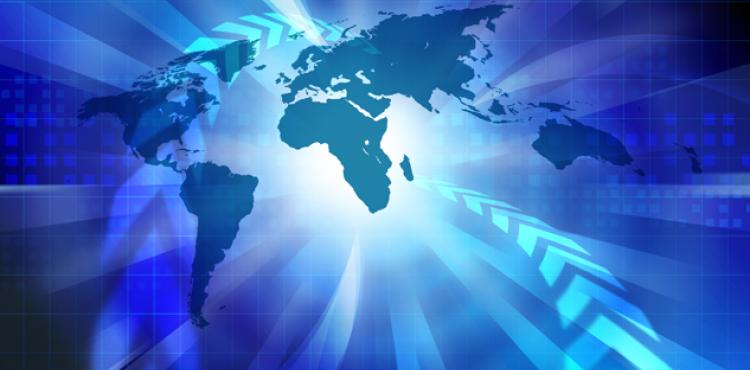
The choice to embark on an internationalisation path stems, more often than not, from the fact that the company acquires contact with distributors, agents and consumers in a given foreign country. In this case the choice of the market comes before the choice to start a process of commercial penetration and even represents the driving force.
Other times, however, when the choice to internationalise is the result of a reasoned analysis and strategic planning of the future business of the company, the choice of the reference market is undoubtedly one of the central moments of the path, on which all the future choices of the entrepreneur will depend and which must be carried out with due attention, as many markets correspond to as many regulatory systems that more or less clearly can meet the needs of the company.
The strategic choice of where to internationalise is generally made by the company considering, on one hand, the cultural, political similarity of the other country with respect to the objectives (clustering) and, on the other hand, the differences as margin of profitability (diversity may be a factor of success as certain countries may have a lower degree of competition in a given product sector).
However, the choice of "where to internationalise" must always be an informed choice. To this end, a useful tool is represented by 'ICE, Agency for the promotion abroad and internationalisation of Italian companies, which contains a specific section dedicated to useful and necessary information related to foreign markets.
Another tool is represented by SACE, which provides data concerning the country risk specific to each market, objective in view of common factors.
You can find here a brief overview of the possible markets identified as target markets by the three-year Regional Program for the Internationalization of Companies (2017-2020), with links to their Chambers of Commerce, the Embassy and the ICE Agency.
Canada: A country rich in raw materials (oil and natural gas) and one of the world’s largest economies; Canada has recently negotiated an ambitious free trade agreement with the European Union (CETA). It is one of the most important markets for Made in Italy (wine, footwear, cosmetics).
Italian Chamber of Commerce in Canada (ICCC)
Ontario Italian Chamber of Commerce (ICCO)
Italian Chamber of Commerce in Canada-West
South Korea: the fifteenth world economy and the fourth Asian economy, devoid of natural resources. South Korea has invested in research and development a substantial share of its GDP (about 4%), the highest figure among OECD countries. It was the first country in Asia to have negotiated a free trade treaty with the European Union. Made in Italy is very appreciated especially in some sectors (textiles, clothing, wines).
Italian Chamber of Commerce in Korea (ITCCK)
Israel: the largest economy in the Middle East, holds the world record for the number of patents per capita issued. Heavily dependent on imports, it invests in human capital and technological innovation.
Israel-Italy Chamber of Commerce and Industry
Germany: The first EU economy and one of the world’s largest economies, Germany has important mineral deposits in the Ruhr region and the Saarland. Economic and commercial relations with Italy are consolidated and dynamic. It shares with our country an economic structure based on the manufacturing industry oriented to export and Smes.
Italian-German Chamber of Commerce (ITALCAM)
Italian Chamber of Commerce for Germany (ITKAM)
Japan: Asia’s second largest economy and one of the world’s largest; 70% of the Japanese workforce is employed in the service and tertiary sectors. It is the EU’s second largest trading partner in Asia, with which it has recently negotiated an important free trade agreement. For Italy, it is an important market for the export of motor vehicles, clothing, textiles and food (wine).
Italian Chamber of Commerce in Japan (ICCJ)
Mexico: the second economy of Latin America and among the main emerging economies; the main sector of the Mexican economy is the tertiary sector (trade, media, financial services and insurance, transport, real estate services, professional services). Trade relations with both the EU and Italy are consolidated.
Italian Chamber of Commerce in Mexico
Embassy of Italy of Mexico City
Russia: Russia, together with Brazil, India, China and South Africa, constitutes the blockade of emerging economies (the "BRICS"). The main sectors of the economy are mining and quarrying, energy production and distribution (natural gas), petrochemicals, food industry, construction and manufacturing. Italian exports mainly concern the leading sectors of Made in Italy (clothing, fashion, footwear, furniture, ceramics, wines, sparkling wines).
Italian Chamber of Commerce in Russia (CCIR)
United Arab Emirates: the seven Emirates are one of the main economies of the Persian Gulf and one of the most dynamic in the world. Over the years, they have undertaken a policy of diversification of the economy, thus managing to reduce their dependence on oil and investing in sectors such as tourism, services, construction, civil aviation (Etihad Airways and Emirates), infrastructure and renewable energy. The city of Dubai will host from 20 October 2020 to 10 April 2021 the Universal Exhibition "Connecting Minds, Creating the Future".
Italian Chamber of Commerce in the United Arab Emirates (IICUAE)
For further information, please consult the following thematic websites:
SACE Insurance and financial services for export and internationalization